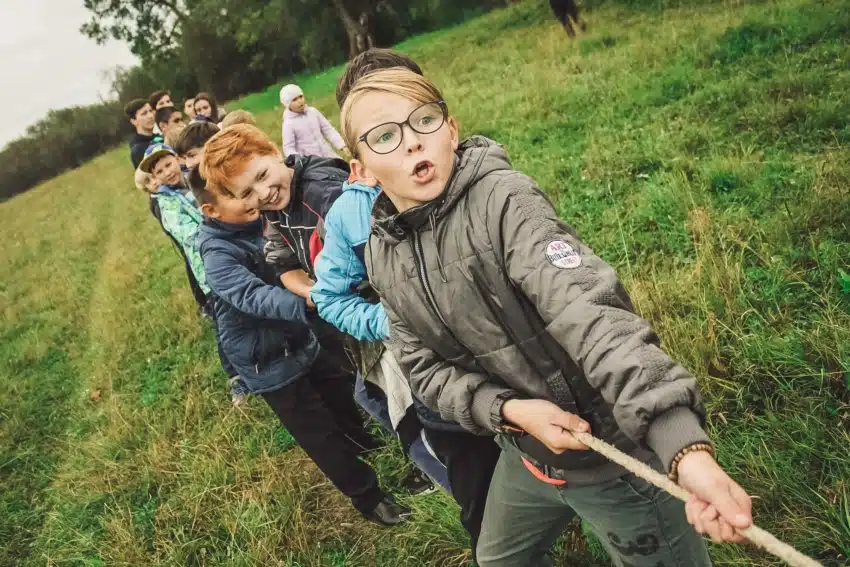Definition of Bullying
Updated: June 19, 2024

It doesn’t matter if you are a student, educator, parent of a child or adolescent, or a community member. Everyone has a role in the prevention of school bullying, and most people have directly or indirectly participated in, witnessed, or experienced some form of bullying in schools.
There are several types of bullying to know about, and different ways that educators, schools, and parents can help stop bullying at school.
Find out below about the causes and effects of bullying, what to do if you or your child is being bullied, and get to know bullying laws.
Definition of Bullying
Bullying must meet certain requirements to be considered bullying. These are: malintent, imbalance of power, repeatedness, distress, and provocation. School bullying may occur either in schools, on campus, or outside of school, but it is due to relationships created in school settings.
Types of Bullying

Photo by Mitch Lensink on Unsplash
1. Direct Bullying and Indirect Bullying
Direct bullying is different from indirect bullying as direct bullying involves direct contact with the one being bullied. Indirect may not.
An example of direct bullying would be throwing something at a person or yelling hurtful words at them. An example of indirect bullying might be spreading rumors about a classmate.
2. Cyberbullying
Cyberbullying is any type of bullying that happens online. It can be hurtful comments on a personal site or deceptive private messaging.
3. Physical Bullying
Physical bullying always involves physical contact with the other person. This can mean hand-to-hand, but can also mean throwing items, tripping, or eliciting others to cause physical harm to a person.
4. Emotional Bullying
Emotional bullying involves using ways to cause emotional hurt to another person. This can include saying or writing hurtful things, causing others to gang up on an individual, and purposely ignoring, or spreading rumors.
5. Sexual Bullying
Sexual bullying refers to any sort of bullying, done in any manner, that is related to a person’s gender or sexuality. Examples can include forcing someone to commit intimate acts, making sexual comments, or unwanted touching.
6. Verbal Bullying
Verbal bullying means using any form of language to cause the other person distress. Examples include using profanities, hurtful language, negatively commenting on a person’s appearance, using derogatory terms, or teasing.
7. Bullying in Higher Education
Many people wrongly assume that bullying stops in high school, but bullying still occurs in higher education as well. This can happen in many forms, and comes with special challenges due to students living away from home and on their own in many cases.
Bullying Laws: Rights at School
- State Anti-Bullying Laws
All fifty U.S. states have anti-bullying laws, although they can vary from state to state. Most states have laws that require schools to report, document, and investigate cases of bullying in schools. Schools are also required by law to take action to stop bullying. Some state laws may list consequences for bullies, and mandate that bullied students be offered proper counseling.
- Federal Anti-Bullying Laws
There are fewer federal laws in the United States when it comes to school bullying.
However, there are many laws that help students with learning or other disabilities. The Individuals with Disabilities Education Act mandates these students be given the right to a “free, appropriate public education.” If a student with an IEP’s (Individualized Education Plan) access to this appropriate public education is inhibited, it is against federal law.
Also, Section 504 and Title II of the Americans with Disabilities Act prohibit discrimination against a student due to disabilities.
Facts and Statistics About Bullying and Harassment in Schools
1. More than one out of five students report being bullied in their life
2. Bullied students reported that bullying occurred in the following places:
- 42% in the hallway or stairwell at school
- 34% inside the classroom
- 22% in the cafeteria
- 19% outside on school grounds
- 10% on the school bus
- 9% in the bathroom or locker room
3. The reasons for being bullied reported most often by students include:
- Physical appearance
- Race/ethnicity
- Gender
- Disability
- Religion
- Sexual orientation
4. School-based bullying prevention programs decrease bullying by up to 25%
Effects of Bullying: How Bullying Affects Children

Photo by Inzmam Khan from Pexels
1. The Consequences
Those who have experienced bullying can have low self esteem which can lead to depression. Some victims of bullying have physical and/or emotional distress as a result of school bullying. Adolescents who were bullied are more likely to develop depression in adulthood.
2. Chronic Victimhood
Unfortunately, some children are victims of chronic bullying, occurring multiple times a week. This is more common in elementary school and can lead to missed class days. It is of utmost importance that schools step in and intervene in cases of chronic bullying to prevent long-term harm.
What are the Main Causes of Bullying?
There are many factors that come into play that can result in bullying. If there are students that have tendencies towards bullying, and the school climate allows it, bullying is likely to occur. Bullying can be a result of a difficult home situation, low self esteem, or poor social skills.
What to Do If Your Child is Bullied

Photo by 🇸🇮 Janko Ferlič – @specialdaddy on Unsplash
It is hard on a parent to find out their child is being bullied, but know that you can do something about it.
First, make sure to document the instance of bullying getting as many details as you can. You should also document the impact it has on your child to help the school understand how bullying is affecting the child’s education. Check if the bullying has violated any laws, and finally, submit a complaint via email about the bullying to your child’s school.
Reluctance to Report
A majority of students do not report bullying in schools to adults. This can be due to fear of retaliation, not wanting to worry parents, being ashamed that they can’t defend themselves, feeling that nothing can change the situation, and fearing the teacher or parent would make the situation worse.
There is also a reluctance to report witnessing an incident, for similar reasons. Reporting bullying will increase with anti-bullying programs because students will feel more confident in their own abilities to intervene, and the abilities of the school to make a difference.
Victims of Bullying
Most bullies bully children in their same grade at school, but sometimes the bully is older. Having a large circle of friends tends to reduce the likelihood of a child being bullied, while a slightly physically weaker, smaller and nonassertive child has a higher likelihood of being bullied.
Common Bullying Solutions That Are Not Successful
Bullying is a serious problem that requires long, consistent effort to keep away from your school. Some schools bring in a speaker and have an anti-bullying assembly, or hold a bullying awareness week. Just one event is not enough, however. There needs to be a long-term program to create long-term solutions.
What Works To Prevent Bullying
Schools need to have policies in place and procedures that are enforced. Bringing anti-bullying into every part of the curriculum can also go a long way. For example, language arts teachers can find required novels that give students empathy for others.
Why Children Become Bullies at School

Photo by Timothy Eberly on Unsplash
People used to think that bullies either have low self esteem and they bully to make themselves feel better, or they come from complicated homes.
Now more research has been done on the topic and many conclude that while the aforementioned topics are still relevant, a new thought is that bullies are higher on the social ladder and push others down to remain on the top of the hierarchy.
Related Problems
There are several related types of bullying that mirror what happens during bullying in schools. These related problems include bullying at juvenile detention facilities, bullying to retain or gain young gang members, and students bullying teachers.
Bullying Behavior
Bullying occurs in every area of the world, despite vast cultural differences between some countries.
With girls, bullying is most likely to be indirect and they bully other girls.
With boys, bullying is usually direct and boys will bully both boys and girls. Boys tend to bully more than girls do, and in many cases, bullying occurs in groups. Bullying in schools tends to decline around age 14-15.
What Makes a Bully?
School bullies tend to share common traits such as aggressive, dominant, slightly lower than average intelligence and reading ability, and are of average school popularity. Many suggest that bullies may have poor social skills, have low empathy levels, and can be uncooperative.
Ways Schools, Parents, and Educators Can Prevent Bullying in Schools

Photo by Anna Samoylova on Unsplash
1. What is School Climate?
School climate is the overall quality and character of school life. A positive school climate goes a long way in preventing bullying in schools. Teachers and administrators can encourage a positive school climate by implementing the following:
2. Teach Kindness and Empathy
Children should know from an early age what effect their behavior has on others. They should be taught to see others’ perspectives to help them understand other people emotionally.
3. Identify Gateway Behaviors and Warning Signs
Teachers are often busy, but if time is spent identifying warning signs of bullying and stopping these small behaviors right away, future distress can be avoided. Examples of ‘gateway behaviors’ include eye rolling, name calling, prolonged staring, back turning, ignoring, and laughing cruelly or encouraging others to laugh.
4. Create Opportunities for Connections
Make the school or classroom feel like a community. When students feel that their peers are part of their group or community, they will be less likely to bully and more likely to stand up to other students bullying and breaking apart the community they helped build.
5. Use the Arts
The arts can be a powerful tool in helping students reflect and express themselves when it comes to bullying in schools. For example, students could write a creative story about bullying. There could be a competition to create artistic anti-bullying posters that will be put up around the school, and the top 3 receive a reward. The possibilities are endless.
6. Participate in Simulation
A fun interactive idea to help reduce bullying in school is having students participate in simulations together. Have a class act out a bullying situation together and explore alternative ways to handle conflict. This will increase their empathy and help them come together to come up with bullying solutions.
7. Bring Peaceful Solutions
Peaceful solutions are the answers to bullying, not spreading more hate. Do not bully a bully, or encourage hate or violence in the student being bullied.
8. Remove Labels, Address Behaviors
Labeling a child as a bully does not help the situation. Teachers and parents should look at bullying behaviors instead of identifying who is a “bully.”
9. Set Clear, Enforceable Rules
If bullying is a part of school and classroom rules, there is likely to be better prevention of bullying in schools. Rules should be in positive terms, cover multiple scenarios, and be age-appropriate.
10. Reward Positive Behavior
When students do something bad, they are called out. When a student does something good, it is important to bring attention to that as well. This shows the classroom that bad attention isn’t the only type of attention.
11. Use Open Communication
Communication is key with bullying prevention. When children feel like they can talk to adults in their community, they are more likely to report bullying, and to avoid bullying by working out their feelings verbally.
12. Monitor Hot Spots
Identify areas of school, or certain sites that seem to have lots of bullying incidents and have a class monitor or school staff patrol the area.
13. Each Child is Different
Remember that every child will respond differently to being bullied, and when reprimanded for bullying. Tailor your methods to the individual child.
14. Listen!
Ask questions, stay involved, and be in the know about what is happening at school.
15. Take Actions
If you find out that there is bullying happening at school, take steps to prevent it. Start by identifying the situation and brainstorming causes. Talk to your child if you are a parent, or all children involved if you are a teacher. Come up with an action plan to prevent the bullying, and clear next steps if this doesn’t stop.
16. Connect
Help your child or student connect with other friends by setting up play groups, study sessions, or offer to drive them to friends’ houses on the weekends. The more connected your child is, the less likely they will be bullied.
17. Trust That Your Child Will Be Ok
It can be difficult to know that your own child is being bullied, but with your support and efforts it can go away. Remember that with time, your child will be okay.

Photo by rahmani KRESNA on Unsplash
Is There Anything I Can Do If I Observe Bullying?
Of course! Stand up for the student, and let the bully know that bullying is not okay. Interrupt the bullying safely by asking the bully a question or asking them to go somewhere with you. If you feel uncomfortable stepping in, contact an adult as soon as possible. Make sure to report the incident.
Measuring Your Effectiveness
1. Both before and after implementing anti-bullying measures, it is advisable to take surveys to measure the effectiveness of a program. Examples of surveys include:
2. Percentage of victims by bullying type
3. Number of victims and number of bullies
4. Number of students who are knowledgeable about bullying and know how to intervene
5. Attendance, behavior, and discipline of bullies and victims
6. Bullying rates at ‘hot spots’
Bullying in schools is a tough issue to tackle, but if schools, parents, and students all commit to stopping prevention and action, it can be stopped.
